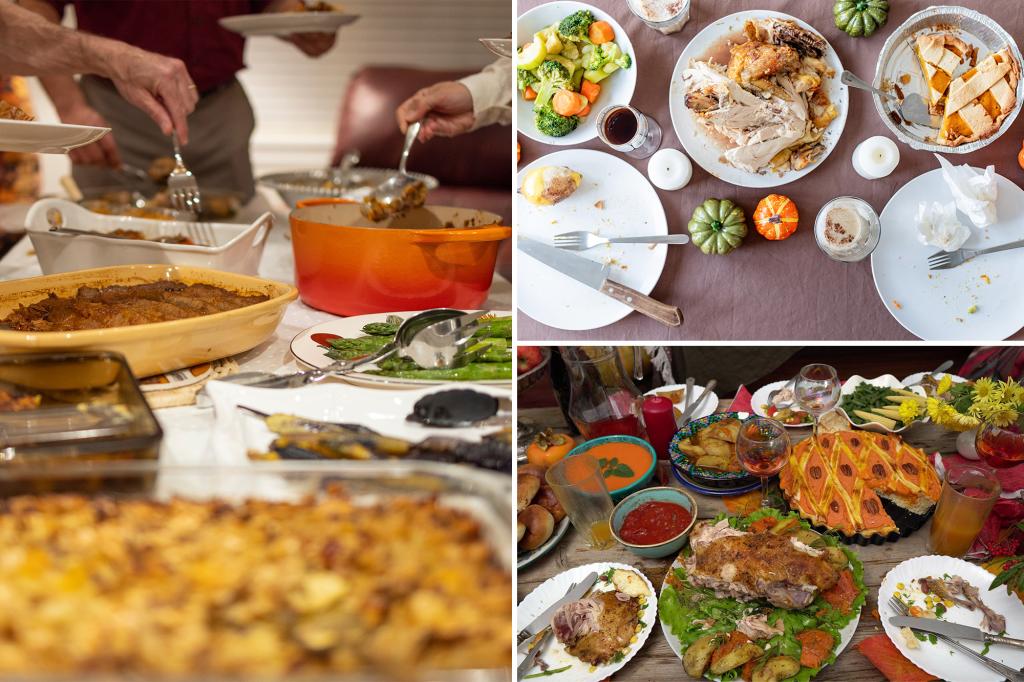Summarize this content to 2000 words in 6 paragraphs
It may be tempting to gobble up your Thanksgiving feast over several days, but food safety experts warn that you can get severely ill if you don’t properly handle the leftovers.
“Leftovers are one of the best parts of Thanksgiving, but once the meal is over, they need to be safely stored,” Lester Schonberger, an associate extension specialist in the Department of Food Science and Technology at Virginia Tech, said last week.
Hot foods should be consumed, stored or reheated within four hours of leaving the oven, Schonberger said. You have six hours to eat or refrigerate cold foods, though you should toss out any cold food that reaches an internal temperature of 70 degrees Fahrenheit or higher during that time.
Leftovers can be generally kept in the fridge for three or four days — basically until the Monday after Thanksgiving — and in the freezer for two to six months.
But it’s not as simple as shoving some pans into the fridge and closing the door. First, you should use airtight heavy-duty foil, plastic wrap, freezer paper or a plastic storage bag to seal the food before storing it.
Schonberger recommends dividing the leftovers into shallow containers and cooling hot eats to 41 degrees Fahrenheit or lower before placing them in the fridge or freezer.
Bacteria grow most rapidly between 40 degrees Fahrenheit and 140 degrees Fahrenheit, a range known as the “danger zone.”
Eating food contaminated with bacteria or other pathogens can cause food poisoning. The Centers for Disease Control and Prevention estimates that 48 million people suffer from foodborne illnesses annually in the US, sending 128,000 to the hospital and killing 3,000.
Turkey and other poultry are among the foods most likely to cause food poisoning — the danger is not cooking it to an internal temperature of 165 degrees Fahrenheit to kill off any harmful bacteria.
Cooked poultry and casserole-style foods can be stored in the freezer for up to four months, while cooked bacon, ham, meat and macaroni and cheese typically have a shorter shelf life in the freezer.
Freezer storage time for cooked fish tends to depend on the type of fish and the storage method.
“Keep in mind that the longer the food is in the freezer, the more the flavor will change due to increased moisture evaporation,” Schonberger said.
Federal food safety experts advise reheating leftovers to at least 165 degrees Fahrenheit.
Covering food before placing it in the microwave allows it to be heated evenly. Using a food thermometer to check several spots ensures it is cooked thoroughly.
Sauces, soups and gravies should be brought to a rolling boil on the stovetop.
Schonberger said there are a few ways to tell your food has gone bad — you notice something is growing on it or it has developed an unusual smell, taste or texture.
“‘When in doubt, throw it out’ is a good rule of thumb,” he said. “If you’re not sure if the food is still good, err on the side of safety.”


